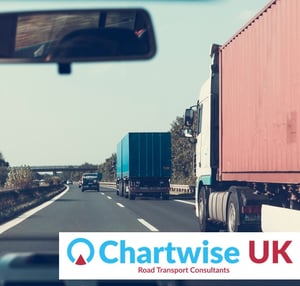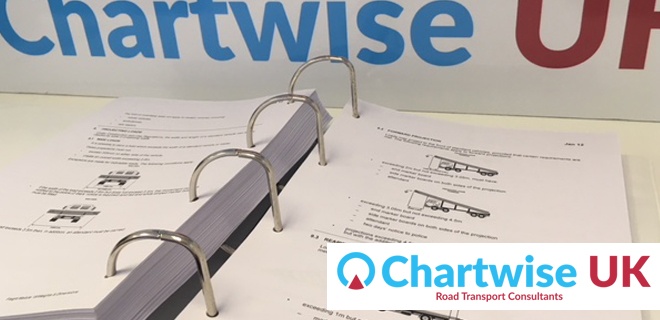In the first of this three-part guide to operator licencing, we cover all of the essentials of gaining and maintaining your licence as a commercial vehicle operator.
Enforcement: DVSA
First of all, it’s crucial to know who you may be reporting to. Commonly (and incorrectly) referred to as VOSA, the Driving Vehicle and Standards Agency deals with all areas of UK commercial transport – from operator licencing to MOTs to driving tests, and everything in between. Created by a fusion of VOSA and DSA, the DVSA monitor the compliance data of UK road haulage operators, and enforce the law when and where necessary.
Types of O-licence
There are three types of O-licence.
1. Standard national licence
A standard national licence is required by a UK operator who carries other people’s goods for hire or reward solely within the UK.
2. Standard international licence
A standard international licence is required by a UK operator who carries other people’s goods between the UK and other EU Member States. This type of licence also allows operations solely within the UK. These licence holders are also automatically granted a Community Licence (formerly known as a Community Authorisation), which eliminates the need to obtain special permits to carry out journeys between EU Member States.
3. Restricted licence
A restricted licence is required by a UK operator who carries goods only in connection with their own trade/business (but not for hire or reward) or that of a subsidiary or holding company — generally known as “own account operation”. This means a restricted licence holder can only carry their own goods; they cannot carry goods belonging to anyone else. A restricted licence is also valid for international journeys to and from other EU states.
Bear this in mind:
An operator who applies for a standard national or international licence does not need to pass any examinations to hold the O-licence. However, he is required to be professionally competent himself or employ a professionally qualified transport manager, who must have passed the transport manager Certificate of Professional Competence (CPC) or be otherwise qualified by exemption.
An operator holding a restricted licence is not required to have a qualified transport manager.
Pending a decision on an initial application, an interim licence may be granted by the Traffic Commissioner. A grant of this kind may be made only in instances when an urgent need to commence operations ahead of the normal nine-week time period can be proven. However, an interim licence is not the same as a full licence; the issuance of the former has no bearing on that of the latter.
Vehicles within scope
Operator licensing applies to all vehicles and vehicle combinations used for the carriage of goods in  connection with trade or business (this includes certain local authorities and charitable organisations), and which exceed 3.5t gross plated weight (or 1525kg unladen weight if not plated).
connection with trade or business (this includes certain local authorities and charitable organisations), and which exceed 3.5t gross plated weight (or 1525kg unladen weight if not plated).
For vehicle combinations, the relevant weight is the sum of the vehicle and trailer or semi-trailer weights, except that, for restricted licence operations only, any trailer with an unladen weight less than 1020kg can be ignored.
Exemptions from O-licensing
The following vehicles are exempt:
- Vehicles licensed as agricultural machines used solely for handling specified goods, and any trailer drawn by them.
- Dual-purpose vehicles and any trailer drawn by them.
- Vehicles used on roads only for the purpose of passing between private premises in the immediate neighbourhood and belonging to the same person (except in the case of a vehicle used only in connection with excavation or demolition) provided that the distance travelled on the road in any one week does not exceed six miles in aggregate.
- Motor vehicles constructed or adapted primarily for the carriage of passengers and their effects and any trailer drawn by them while being so used.
- Vehicles being used for funerals.
- Vehicles being used for police, fire brigade and ambulance service purposes.
- Vehicles being used for fire-fighting or rescue work at mines.
- Vehicles on which a permanent body has not yet been built, carrying only goods for trial or which will form part of the completed body.
- Vehicles being used under a trade licence.
- Vehicles used in the service of a visiting force or headquarters.
- Vehicles used by the armed forces.
- Trailers not constructed for the carriage of goods but which are used incidentally for that purpose in connection with the construction, maintenance or repair of roads.
- Road rollers or any trailer drawn by them.
- Vehicles used by HM Coastguards or the Royal National Lifeboat Institution for the carriage of lifeboats, life-saving appliances or crew.
- Vehicles fitted with permanent equipment (ie machines or appliances) so that the only goods carried are:
- water, fuel, accumulators and other equipment used for propelling or running the vehicle, or loose tools and loose equipment;
- for threshing, grading, cleaning or chemically treating grain or for mixing by the equipment with other goods not carried on the vehicle to make animal fodder; and
- mud or other matter swept up from the road by the equipment.
- Vehicles while being used by a local authority for the purpose of enactments relating to weights and measures or the sale of food or drugs.
- Vehicles used by a local authority under the Civil Defence Act 1948.
- Steam-propelled vehicles.
- Tower wagons or any trailer drawn by them provided that any goods carried on the trailer are required for use in connection with the work on which the tower wagon is used.
- Vehicles used on airports under the Civil Aviation Act 1982.
- Electrically propelled vehicles in use before 1 March 2015.
- Showmen's goods vehicles and any trailer drawn by such vehicles.
- Vehicle of non-resident operators carrying out cabotage operations in the UK under EEC Regulation 3118/93.
- Vehicles first registered prior to 1 January 1977 which are not over 1525kg unladen weight and are plated for more than 3500kg but less than 3556.21kg.
- Vehicles used by a highway authority in connection with weighbridges.
- Vehicles used for emergency operations by the water, electricity, gas and telephone services.
- Recovery vehicles.
- Vehicles used for snow-clearing or the distribution of grit, salt or other materials on frosted, ice-bound or snow-covered roads and for any other purpose connected with such activities.
- Vehicles going to or coming from a test station and carrying a load which is required for the test at the request of the Secretary of State for Transport (ie by the test station).
- Vehicles carrying training loads during tests, where the vehicle is being used for a practical driving test, for driving instruction or for testing or training for the CPC test.
- Vehicles fuelled entirely by alternative fuels with a permissible laden mass not exceeding 4.25 tonnes and currently operated in Great Britain.
Acquiring an O-licence: Requirements
In applying for an o-licence, you must demonstrate that you have:
1. professional competence;
2. good repute;
3. suitable financial standing;
4. a suitable operating centre (or centres); and
5. made lawful arrangements to keep vehicles in a serviceable condition at all times.
That's a lot of text to take in all at once. Take some time to digest it. We'll commence part two next week, and you can expect to read about financial standing, vehicle maintenance, and a great deal more.
You may have noticed there's been a lot of talk of late about compliance failures; in fact, the trade magazines have been full of these kind of news stories. In scenarios where an operator's behaviour has contravened the stipulations of their licence, the TC typically advises refresher training of one sort or another.
What does this retraining involve? You can get to grips with some of the content here:




